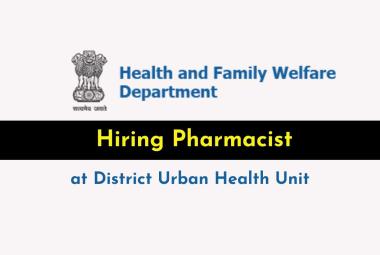ABOUT AUTHORS:
Saurabh Kumar Singh*, Aruna Chandra Singh
Department of pharmaceutical Chemistry, Rajiv Academy for pharmacy, Mathura,
N.H. #2 Delhi-Mathura Bye-pass, P.O. Chhatikara,
Mathura-281001.Uttar Pradesh, India
*s_s_khirwar@yahoo.co.in
ABSTRACT
The rate of cancer rise is dramatic, doubling in the last 30 years. Furthermore, of the estimated 560,000 cancer victims who would die in 1997, most of them could have prevented their illness had they paid attention to some simple lifestyle factors.
Although the number of cancer deaths continues to rise each year in the U.S., the per capita cancer mortality rate has just recently started to decline. This celebrated small decline was first announced by the National Cancer Institute in late 1996, but a careful retrospective review of the data indicated that the per capita cancer death rate peaked in 1991 and has ever so slowly declined thereafter. What was the reason for this decline? Not improved cancer treatments, but cancer prevention itself emerges as the cause for this good news. A national commitment to the prevention of cancer, largely replacing reliance on hopes for universal cures.
REFERENCE ID: PHARMATUTOR-ART-1887
INTRODUCTION
WHAT IS CANCER?
Carcinoma: Malignant tumor
Cancer is the uncontrolled growth of abnormal cells in the body. Cancerous cells are also called malignant cells.
These are some factors which are responsible for cancer:
- Benzene and other chemicals
- Drinking excess alcohol
- Environmental toxins, such as certain poisonous mushrooms and a type of poison that can grow on peanut plants (aflatoxins)
- Excessive sunlight exposure
- Genetic problems
- Obesity
- Radiation
- Viruses
However, the cause of many cancers remains unknown.
TYPES OF CANCER
The three most common cancers in men in the United States are:
- Prostate cancer
- Lung cancer
- Colon cancer
The three most common cancers in women in the United States are:
- Breast cancer
- Colon cancer
- Lung cancer
Some cancers are more common in certain parts of the world. For example, in Japan, there are many cases of stomach cancer, but in the United States, this type of cancer is pretty rare. Differences in diet may play a role.
Some other types of cancers include:
- Brain cancer
- Cervical cancer
- Hodgkin's lymphoma
- Kidney cancer
- Leukemia
- Liver cancer
- Non-Hodgkin's lymphoma
- Ovarian cancer
- Skin cancer
- Testicular cancer
- Thyroid cancer
- Uterine cancer
SYMPTOMS
Cancer is often curable if detected early enough. Unfortunately, many patients are not mindful of the importance of early detection.
Some cancers may not have any symptoms at all. In certain cancers, such as pancreatic cancer, symptoms often do not start until the disease has reached an advanced stage.
The following symptoms can occur with most cancers:
- Chills
- Fatigue
- Fever
- Loss of appetite
- Malaise
- Night sweats
- Weight loss
7 WARNING SIGNALS OF CANCER
1. A change in bowel or bladder habits
2. A sore that does not heal
3. Unusual bleeding or discharge
4. Thickening or a lump in the breast or elsewhere
5. Indigestion or difficulty in swallowing
6. Obvious change in a wart or mole
7. Nagging cough or hoarsness
SIGNS AND TESTS
Like symptoms, the signs of cancer vary based on the type and location of the tumor. Common tests include the following:
- Biopsy of the tumor
- Blood tests (which look for chemicals such as tumor markers)
- Bone marrow biopsy (for lymphoma or leukemia)
- Chest x-ray
- Complete blood count (CBC
- CT scan
- MRI scan
Most cancers are diagnosed by biopsy. Depending on the location of the tumor, the biopsy may be a simple procedure or a serious operation. Most patients with cancer have CT scans to determine the exact location and size of the tumor or tumors.
A cancer diagnosis is difficult to cope with. It is important, however, that you discuss the type, size, and location of the cancer with your doctor when you are diagnosed. You also will want to ask about treatment options, along with their benefits and risks.
It's a good idea to have someone with you at the doctor's office to help you get through the diagnosis. If you have trouble asking questions after hearing about your diagnosis, the person you bring with you can ask them for you.
TREATMENT
Treatment varies based on the type of cancer and its stage. The stage of a cancer refers to how much it has grown and whether the tumor has spread from its original location.
- If the cancer is confined to one location and has not spread, the most common treatment approach is surgery to cure the cancer. This is often the case with skin cancers, as well as cancers of the lung, breast, and colon.
- If the tumor has spread to local lymph nodes only, sometimes these can be removed.
- If surgery cannot remove all of the cancer, the options for treatment include radiation, chemotherapy, or both. Some cancers require a combination of surgery, radiation, and chemotherapy.
- Lymphoma, or cancer of the lymph glands, is rarely treated with surgery. Chemotherapy and radiation therapy are most often used to treat lymphoma.
Although treatment for cancer can be difficult, there are many ways to keep up your strength.
If you have radiation treatment, know that:
- Radiation treatment is painless.
- Treatment is usually scheduled every weekday.
- You should allow 30 minutes for each treatment session, although the treatment itself usually takes only a few minutes.
- You should get plenty of rest and eat a well-balanced diet during the course of your radiation therapy.
- Skin in the treated area may become sensitive and easily irritated.
- Side effects of radiation treatment are usually temporary. They vary depending on the area of the body that is being treated.
If you are going through chemotherapy, you should eat right. Chemotherapy causes your immune system to weaken, so you should avoid people with colds or the flu. You should also get plenty of rest, and don't feel as though you have to accomplish tasks all at once.
It will help you to talk with family, friends, or a support group about your feelings. Work with your health care providers throughout your treatment. Helping yourself can make you feel more in control.
Expectations (prognosis)
The outlook depends on the type of cancer. Even among people with one type of cancer, the outcome varies depending on the stage of the tumor when they are diagnosed.
Some cancers can be cured. Other cancers that are not curable can still be treated well. Some patients can live for many years with their cancer. Other tumors are quickly life-threatening.
Complications
One complication is that the cancer may spread. Other complications vary with the type and stage of the tumor. Contact your health care provider if you develop symptoms of cancer.
Prevention
You can reduce the risk of getting a cancerous (malignant) tumor by:
- Eating a healthy diet
- Exercising regularly
- Limiting alcohol
- Maintaining a healthy weight
- Minimizing your exposure to radiation and toxic chemicals
- Not smoking or chewing tobacco
- Reducing sun exposure, especially if you burn easily
ANTI-CANCEROUS DRUGS
Cancer screenings, such as mammography and breast examination for breast cancer and colonoscopy for colon cancer, may help catch these cancers at their early stages when they are most treatable. Some people at high risk for developing certain cancers can take medication to reduce their risk.
TAMOXIFEN
There are least 2 types of estrogen receptors. Tamoxifen blocks estrogen from receptors in some tissues such as breast, while it mimics estrogen in other tissues. Thus it can help protect against breast cancer while offering estrogen's protective benefits with osteoporosis and heart attack .
TAXOL
Taxol from the Yew tree binds to microtubules which are necessary for cell division among many other things.
THIAMINE AND FLUROURACIL
DNA requires the nucleic acid base Thymine which is made by methylating Uracil. The chemotherapy drug Fluoro uracil blocks this reaction halting cell reproduction.
FOLATE AND METHOTREXATE
Folate (a vitamin) is involved with methylations such as the one above that converts uracil to thymine. The chemotherapy drug methotrexate blocks the processing of folate into an active form. The net effect is the same as with flurouracil.
Rituximab Injection
Rituximab is used alone or with other medications to treat certain types of non-Hodgkin's lymphoma (NHL; a type of cancer that begins in a type of white blood cells that normally fights infection). Rituximab is also used with another medication to treat the symptoms of rheumatoid arthritis (RA; a condition in which the body attacks its own joints, causing pain, swelling, and loss of function) in people who have already been treated with a certain type of medication called a tumor necrosis factor (TNF) inhibitor. Rituximab is in a class of medications called biologic antineoplastic agents. It treats NHL by causing the death of blood cells that have multiplied abnormally. It treats rheumatoid arthritis by causing the death of certain blood cells that may cause the immune system to attack the joints.
Doxorubicin
Doxorubicin is used in combination with other medications to treat certain types of bladder, breast, lung, stomach, and ovarian cancer; Hodgkin's lymphoma (Hodgkin's disease) and non-Hodgkin's lymphoma (cancer that begins in the cells of the immune system); and certain types of leukemia (cancer of the white blood cells), including acute lymphoblastic leukemia (ALL) and acute myeloid leukemia (AML, ANLL). Doxorubicin is also used alone and in combination with other medications to treat certain types of thyroid cancer and certain types of soft tissue or bone sarcomas (cancer that forms in muscles and bones). It is also used to treat neuroblastoma (a cancer that begins in nerve cells and occurs mainly in children) and Wilms' tumor (a type of kidney cancer that occurs in children). Doxorubicin is in a class of medications called anthracyclines. It works by slowing or stopping the growth of cancer cells in your body.
Cyclophosphamide Injection
Cyclophosphamide is used alone or in combination with other medications to treat Hodgkin's lymphoma (Hodgkin's disease) and non-Hodgkin's lymphoma (types of cancer that begin in a type of white blood cells that normally fights infection); cutaneous T-cell lymphoma (CTCL, a group of cancers of the immune system that first appear as skin rashes); multiple myeloma (a type of cancer of the bone marrow); and certain types of leukemia (cancer of the white blood cells), including chronic lymphocytic leukemia (CLL), chronic myelogenous leukemia (CML), acute myeloid leukemia (AML, ANLL), and acute lymphoblastic leukemia (ALL). It is also used to treat retinoblastoma (cancer in the eye), neuroblastoma (a cancer that begins in nerve cells and occurs mainly in children), ovarian cancer (cancer that begins in the female reproductive organs where eggs are formed), and breast cancer. Cyclophosphamide is also used to treat nephrotic syndrome (a disease that is caused by damage to the kidneys) in children whose disease has not improved, has gotten worse, or has come back after taking other medications or in children who experienced intolerable side effects with other medications. Cyclophosphamide is in a class of medications called alkylating agents. When cyclophosphamide is used to treat cancer, it works by slowing or stopping the growth of cancer cells in your body. When cyclophosphamide is used to treat nephrotic syndrome, it works by suppressing your body's immune system.
Cyclophosphamide
Cyclophosphamide is used alone or in combination with other medications to treat Hodgkin's lymphoma (Hodgkin's disease) and non-Hodgkin's lymphoma (types of cancer that begin in a type of white blood cells that normally fights infection); cutaneous T-cell lymphoma (CTCL, a group of cancers of the immune system that first appear as skin rashes); multiple myeloma (a type of cancer of the bone marrow); and certain types of leukemia (cancer of the white blood cells), including chronic lymphocytic leukemia (CLL), chronic myelogenous leukemia (CML), acute myeloid leukemia (AML, ANLL), and acute lymphoblastic leukemia (ALL). It is also used to treat retinoblastoma (cancer in the eye), neuroblastoma (a cancer that begins in nerve cells and occurs mainly in children), ovarian cancer (cancer that begins in the female reproductive organs where eggs are formed), and breast cancer. Cyclophosphamide is also used to treat nephrotic syndrome (a disease that is caused by damage to the kidneys) in children whose disease has not improved, has gotten worse, or has come back after taking other medications or in children who experienced intolerable side effects with other medications. Cyclophosphamide is in a class of medications called alkylating agents. When cyclophosphamide is used to treat cancer, it works by slowing or stopping the growth of cancer cells in your body. When cyclophosphamide is used to treat nephrotic syndrome, it works by suppressing your body's immune system.
Bleomycin
Bleomycin injection is used alone or in combination with other medications to treat head and neck cancer (including cancer of the mouth, lip, cheek, tongue, palate, throat, tonsils, and sinuses) and cancer of the penis, testicles, cervix, and vulva (the outer part of the vagina). Bleomycin is also used to treat Hodgkin's lymphoma (Hodgkin's disease) and non-Hodgkin's lymphoma (cancer that begins in the cells of the immune system) in combination with other medications. It is also used to treat pleural effusions (a condition when fluid collects in the lungs) that are caused by cancerous tumors. Bleomycin is a type of antibiotic that is only used in cancer chemotherapy. It slows or stops the growth of cancer cells in your body.
Dacarbazine
Dacarbazine is used to treat melanoma (a type of skin cancer) that has spread to other parts of your body. Dacarbazine is also used in combination with other medications to treat Hodgkin's lymphoma (Hodgkin's disease; a type of cancer that begins in a type of white blood cells that normally fights infection). Dacarbazine is in a class of medications known as purine analogs. It works by slowing or stopping the growth of cancer cells in your body.
Carmustine
Carmustine injection is used to treat certain types of brain tumors. Carmustine injection is also used along with prednisone to treat multiple myeloma (a type of cancer of the bone marrow). It is also used with other medications to treat Hodgkin's lymphoma (Hodgkin's disease) and non-Hodgkin's lymphoma (cancer that begins in the cells of the immune system) that has not improved or that has worsened after treatment with other medications. Carmustine is in a class of medications called alkylating agents. It works by slowing or stopping the growth of cancer cells in your body.
Tositumomab Injection
Tositumomab injection is used to treat non-Hodgkin's lymphoma (cancer that begins in the cells of the immune system) that has not improved or that had improved after treatment with other medications, but later returned. Tositumomab injection is in a class of medications called monoclonal antibodies with radioisotopes. It works by attaching to cancer cells and releasing radiation to damage the cancer cells.
Plerixafor Injection
Plerixafor injection is used along with a granulocyte-colony stimulating factor (G-CSF) medication such as filgrastim (Neupogen) or pegfilgrastim (Neulasta) to prepare the blood for an autologous stem cell transplant (procedure in which certain blood cells are removed from the body and then returned to the body after chemotherapy and/or radiation) in patients with non-Hodgkin's lymphoma (NHL; cancer that begins in a type of white blood cells that normally fights infection) or multiple myeloma (a type of cancer of the bone marrow). Plerixafor injection is in a class of medications called hematopoeitic stem cell mobilizers. It works by causing certain blood cells to move from the bone marrow to the blood so that they can be removed for transplant.
Chlorambucil
Chlorambucil is used treat a certain type of chronic lymphocytic leukemia (CLL; a type of cancer of the white blood cells). Chlorambucil is also used to treat non-Hodgkin's lymphoma (NHL) and Hodgkin's disease (types of cancer that begin in certain white blood cells that normally fight infection). Chlorambucil is in a class of medications called alkylating agents. It works by slowing or stopping the growth of cancer cells in your body.
Brentuximab Vedotin Injection
Brentuximab vedotin injection is used to treat patients with Hodgkin's lymphoma who did not respond to a stem cell transplant (procedure that replaces diseased bone marrow with healthy bone marrow) or at least two treatment periods of chemotherapy. Brentuximab vedotin injection is also used to treat systemic anaplastic large cell lymphoma (sALCL; a type of non-Hodgkin lymphoma) who did not respond to another treatment period of chemotherapy. Brentuximab vedotin injection is in a class of medications called antibody-drug conjugates. It works by killing cancer cells.
Ibritumomab Injection
Ibritumomab injection is used with rituximab (Rituxan) to treat certain types of non-Hodgkin's lymphoma (cancer that begins in the cells of the immune system) that has not improved or that has worsened after treatment with other medications. Ibritumomab injection is in a class of medications called monoclonal antibodies with radioisotopes. It works by attaching to cancer cells and releasing radiation to damage the cancer cells.
Bendamustine Injection
Bendamustine injection is used to treat chronic lymphocytic leukemia (CLL; a type of cancer of the white blood cells). Bendamustine injection is also used to treat a type of non-Hodgkins lymphoma (NHL: cancer that begins in a type of white blood cell that normally fights infection) that is slow spreading, but has continued to worsen during or after treatment with another medication. Bendamustine is in a class of medications called alkylating agents. It works by killing existing cancer cells and limiting the growth of new cancer cells.
GEOGRAPHICAL STATUS OF CANCER
WORLD: It is estimated that about 9 million new cancer cases are diagnosed every year and over 4.5 million people die from cancer each year in the world.
INDIA: The estimated number of new cancers in India per year is about 7 lakhs and over 3.5 lakhs people die of cancer each year. Out of these 7 lakhs new cancers about 2.3 lakhs (33%) cancers are tobacco related.
All though thousands of cancer patients are receiving treatment from various cancer hospitals in India, no scientific evaluation of therapeutic efficacy in terms of pattern of care and survival has been done. The data from HBCRs of India has shown that Cancer of Cervix (28%) and Breast (16%) in women are most common and cancer of Head and Neck region constitute about 30 % of all cancer in males and females.
Leading Sites of Cancer - Male:
Pharyngeal cancers (excluding cancer of nasopharynx) continue to be the most common form of cancers among males and accounts for 14.1% of the total cancers in males. Among Pharyngeal cancers, cancer of the Hypopharynx is the most predominant site of cancer accounting for over 68 % of the Pharyngeal cancers. The other common cancers among males in order are oral cavity (11.2%), Leukaemias (8.4%), Oesophagus (8.3%) and Lung (6.8%)
Leading Sites of Cancer - Female:
Cancer of the cervix uteri continues to be the most predominant site of cancer and accounted for 26.7% of all cancers in females. Cancer of the breast is the second most common site (16.6%) followed by cancers of oral cavity (11%), Oesophagus (5.7%) and ovary (5%). Over the years, a gradual decrease in the proportion of cervical cancers and marginal but steady increase in the numbers and relative proportion of breast cancers is observed.
Common Cancers:
The Commonest cancers among Males and Females
|
MALE |
FEMALE |
|
Pharynx |
Cervix |
|
Oral Cavity |
Breast |
|
Leukaemia |
Oral Cavity |
|
Oesophagus |
Oesophagus |
|
Brain & Nervous system |
Stomach |
|
Lung |
Ovary |
|
Lymphoma |
Leukaemia |
|
Stomach |
Thyroid |
|
Larynx |
Lymphoma |
|
Liver |
Pharynx |
Treatment
There are four standard methods of treatment for cancer: surgery, chemotherapy, radiation therapy, immunotherapy and biologic therapy. Clinical trials may be an option for some as cancer treatment who meet certain study criteria. Others may choose alternative cancer treatments, which are usually not FDA-approved and often given in locations outside of the U.S.
When initially diagnosed with cancer, a cancer specialist, an oncologist, will provide you with the cancer treatment options. He or she will recommend the best treatment plan based on your type of cancer, how far it has spread, and other important factors like your age and general health.
Ultimately, you are the one who makes your treatment decisions based on your doctor's recommendations, possible second opinions, and other information gathered from qualified professionals.
Methods of Treatment for Cancer
Surgery:
Surgery can be used to prevent, treat, stage (determine how advanced the cancer is), and diagnose cancer. In relation to cancer treatment, surgery is done to remove tumors or as much of the cancerous tissue as possible. It is often performed in conjunction with chemotherapy or radiation therapy.
For those whose cancer is not treatable, palliative surgery may be an option to relieve pain that may be caused by the cancer. Palliative surgery is not intended to treat or cure the cancer, or even to prolong life, but more to lessen discomfort.
Chemotherapy:
Chemotherapy is a type of cancer treatment that uses of drugs to eliminate cancer cells. Unlike surgery, chemotherapy affects the entire body, not just a specific part. It works by targeting rapidly multiplying cancer cells. Unfortunately, other types of cells in our bodies also multiply at high rates, like hair follicle cells and the cells that line our stomachs. This is why chemo can cause side effects like hair loss and an upset stomach.
Chemotherapy is most commonly given by pill or intravenously (IV), but can be given in other ways. A single type of chemotherapy, or a combination of drugs, may be prescribed for a specific length of time. Like surgery, chemotherapy can be prescribed alone, in conjunction with radiation therapy or biologic therapy.
Radiation Therapy:
Radiation therapy uses certain types of energy to shrink tumors or eliminate cancer cells. It works by damaging a cancer cell's DNA, making it unable to multiply. Cancer cells are highly sensitive to radiation and typically die when treated. Nearby healthy cells can be damaged as well, but are resilient and are able to fully recover.
Radiation therapy may be given alone, along with chemotherapy, and/or with surgery. The decision to combine radiation therapy with other types of treatment depends on the stage of cancer and other factors.
Biologic or Targeted Therapy:
Biologic therapy is a term for drugs that target characteristics of cancerous tumors. Some types of targeted therapies work by blocking the biological processes of tumors that allow tumors to thrive and grow. Other types of therapies cut off the blood supply to the tumor, causing it to basically starve and die because of a lack of blood.
Targeted therapy is used in select types of cancer and is not available for everyone. It is given in conjunction with other cancer treatments.
Clinical Trials:
Research studies of the latest drugs and therapies against many types of cancer are continuously being conducted. This type of research requires human volunteers to test the safety and effectiveness of new therapies. Volunteers must meet the criteria of each study to participate.
How many stages of cancer are there?
It depends on which cancer you are talking about and which staging system the doctor is using. Some types of cancer have more than one type of staging system.
Most types of cancer have 4 stages, numbered from 1 to 4. Often doctors write the stage down in roman numerals. So you may see stage 4 written down as stage IV.
Sometimes doctors talk about stage 0 cancer, for example in skin cancer. Stage 0 is also called carcinoma in situ. It means that there are cancerous cells there. But they are all contained within the tissue they developed in. They haven't broken through the basement membrane, which means they can't spread through the bloodstream or the lymphatic system or into other tissues nearby. Your doctor may also describe this as a non invasive cancer.
Here is a brief summary of what the stages mean for most types of cancer.
Stage 1:usually means a cancer is relatively small and contained within the organ it started in.
Stage 2:usually means the cancer has not started to spread into surrounding tissue, but the tumour is larger than in stage 1. Sometimes stage 2 means that cancer cells have spread into lymph nodes close to the tumour. This depends on the particular type of cancer.
Stage 3:usually means the cancer is larger. It may have started to spread into surrounding tissues and there are cancer cells in the lymph nodes in the area.
Stage 4:means the cancer has spread from where it started to another body organ. This is also called secondary or metastatic cancer.
The majority of chemotherapeutic drugs can be divided in to alkylating agents, antimetabolites, anthracyclines, plant alkaloids, topoisomerase inhibitors, and other antitumour agents. All of these drugs affect cell division or DNA synthesis and function in some way.
Some newer agents do not directly interfere with DNA. These include monoclonal antibodies and the new tyrosine kinase inhibitors e.g. imatinib mesylate (Gleevec or Glivec), which directly targets a molecular abnormality in certain types of cancer (chronic myelogenous leukemia, gastrointestinal stromal tumors). These are examples of targeted therapies.
In addition, some drugs that modulate tumor cell behaviour without directly attacking those cells may be used. Hormone treatments fall into this category.
Where available, Anatomical Therapeutic Chemical Classification System codes are provided for the major categories.
Alkylating agents (L01A)
Alkylating agents are so named because of their ability to alkylate many nucleophilic functional groups under conditions present in cells. Cisplatin and carboplatin, as well as oxaliplatin, are alkylating agents. They impair cell function by forming covalent bonds with the amino, carboxyl, sulfhydryl, and phosphate groups in biologically important molecules.
Other agents are mechlorethamine, cyclophosphamide, chlorambucil, ifosfamide. They work by chemically modifying a cell's DNA.
Anti-metabolites (L01B)
Anti-metabolites masquerade as purines ((azathioprine, mercaptopurine)) or pyrimidines—which become the building-blocks of DNA. They prevent these substances from becoming incorporated in to DNA during the "S" phase (of the cell cycle), stopping normal development and division. They also affect RNA synthesis. Due to their efficiency, these drugs are the most widely used cytostatics.
Plant alkaloids and terpenoids (L01C)
These alkaloids are derived from plants and block cell division by preventing microtubule function. Microtubules are vital for cell division, and, without them, cell division cannot occur. The main examples are vinca alkaloids and taxanes.
Vinca alkaloids (L01CA)
Vinca alkaloids bind to specific sites on tubulin, inhibiting the assembly of tubulin into microtubules (M phase of the cell cycle). They are derived from the Madagascar periwinkle, Catharanthus roseus (formerly known as Vinca rosea). The vinca alkaloids include:
- Vincristine
- Vinblastine
- Vinorelbine
- Vindesine
Podophyllotoxin (L01CB)
Podophyllotoxin is a plant-derived compound that is said to help with digestion as well as used to produce two other cytostatic drugs, etoposide and teniposide. They prevent the cell from entering the G1 phase (the start of DNA replication) and the replication of DNA (the S phase). The exact mechanism of its action is not yet known.
The substance has been primarily obtained from the American Mayapple (Podophyllum peltatum). Recently it has been discovered that a rare Himalayan Mayapple (Podophyllum hexandrum) contains it in a much greater quantity, but, as the plant is endangered, its supply is limited. Studies have been conducted to isolate the genes involved in the substance's production, so that it could be obtained recombinantly.
Taxanes (L01CD)
The prototype taxane is the natural product paclitaxel, originally known as Taxol and first derived from the bark of the Pacific Yew tree. Docetaxel is a semi-synthetic analogue of paclitaxel. Taxanes enhance stability of microtubules, preventing the separation of chromosomes during anaphase.
Topoisomerase inhibitors (L01CB and L01XX)
Topoisomerases are essential enzymes that maintain the topology of DNA. Inhibition of type I or type II topoisomerases interferes with both transcription and replication of DNA by upsetting proper DNA supercoiling.
• Some type I topoisomerase inhibitors include camptothecins: irinotecan and topotecan.
• Examples of type II inhibitors include amsacrine, etoposide, etoposide phosphate, and teniposide. These are semisynthetic derivatives of epipodophyllotoxins, alkaloids naturally occurring in the root of American Mayapple (Podophyllum peltatum).
Cytotoxic antibiotics (L01D)
These include:
• actinomycin (L01DA01).
• anthracyclines
- doxorubicin (L01DB01)
- daunorubicin (L01DB02)
- valrubicin
- idarubicin
- epirubicin (L01DB03), which also inhibit topoisomerase II)
• other cytotoxic antibiotics
- bleomycin (L01DC01). Bleomycin acts in unique way through oxidation of a DNA-bleomycin-Fe(II) complex and forming free radicals, which induce damage and chromosomal aberrations.
- plicamycin (L01DC02)
- mitomycin (L01DC03)
Isolated infusion approaches
Isolated limb perfusion (often used in melanoma), or isolated infusion of chemotherapy into the liver or the lung have been used to treat some tumours. The main purpose of these approaches is to deliver a very high dose of chemotherapy to tumor sites without causing overwhelming systemic damage. These approaches can help control solitary or limited metastases, but they are by definition not systemic, and, therefore, do not treat distributed metastases or micrometastases.
Targeted delivery mechanisms
Specially targeted delivery vehicles aim to increase effective levels of chemotherapy for tumor cells while reducing effective levels for other cells. This should result in an increased tumor kill and/or reduced toxicity.
Specially targeted delivery vehicles have a differentially higher affinity for tumor cells by interacting with tumor-specific or tumour-associated antigens.
In addition to their targeting component, they also carry a payload - whether this is a traditional chemotherapeutic agent, or a radioisotope, or an immune-stimulating factor. Specially targeted delivery vehicles vary in their stability, selectivity, and choice of target, but, in essence, they all aim to increase the maximum effective dose that can be delivered to the tumor cells. Reduced systemic toxicity means that they can also be used in sicker patients, and that they can carry new chemotherapeutic agents that would have been far too toxic to deliver via traditional systemic approaches.
Nanoparticles
Nanoparticles have emerged as a useful vehicle for poorly soluble agents such as paclitaxel. Protein-bound paclitaxel (e.g., Abraxane) or nab-paclitaxel was approved by the U.S. Food and Drug Administration (FDA) in January 2005 for the treatment of refractory breast cancer. This formulation of paclitaxel uses human albumin as a vehicle and not the Cremophor vehicle used in Taxol. Nanoparticles made of magnetic material can also be used to concentrate agents at tumour sites using an externally applied magnetic field.
Electrochemotherapy
Electrochemotherapy is the combined treatment in which injection of a chemotherapeutic drug is followed by application of high-voltage electric pulses locally to the tumor. The treatment enables the chemotherapeutic drugs, which otherwise cannot or hardly go through the membrane of cells (such as bleomycin and cisplatin), to enter the cancer cells. Hence, greater effectiveness of antitumor treatment is achieved. Clinical electrochemotherapy has been successfully used for treatment of cutaneous and subcutaneous tumors irrespective of their histological origin. The method has been reported as safe, simple and highly effective in all reports on clinical use of electrochemotherapy. According to the ESOPE project (European Standard Operating Procedures of Electrochemotherapy), the Standard Operating Procedures (SOP) for electrochemotherapy were prepared, based on the experience of the leading European cancer centres on electrochemotherapy. Recently, new electrochemotherapy modalities have been developed for treatment of internal tumors using surgical procedures, endoscopic routes or percutaneous approaches to gain access to the treatment area.
Dosage
Dosage of chemotherapy can be difficult: If the dose is too low, it will be ineffective against the tumor, whereas, at excessive doses, the toxicity (side-effects, neutropenia) will be intolerable to the patient. This has led to the formation of detailed "dosing schemes" in most hospitals, which give guidance on the correct dose and adjustment in case of toxicity. In immunotherapy, they are in principle used in smaller dosages than in the treatment of malignant diseases.
In most cases, the dose is adjusted for the patient's body surface area, a measure that correlates with blood volume. The BSA is usually calculated with a mathematical formula or a nomogram, using a patient's weight and height, rather than by direct measurement.
Drug Delivery
Most chemotherapy is delivered intravenously, although a number of agents can be administered orally (e.g., melphalan, busulfan, capecitabine). In some cases, isolated limb perfusion (often used in melanoma), or isolated infusion of chemotherapy into the liver or the lung have been used. The main purpose of these approaches is to deliver a very high dose of chemotherapy to tumour sites without causing overwhelming systemic damage.
Depending on the patient, the cancer, the stage of cancer, the type of chemotherapy, and the dosage, intravenous chemotherapy may be given on either an inpatient or an outpatient basis. For continuous, frequent or prolonged intravenous chemotherapy administration, various systems may be surgically inserted into the vasculature to maintain access. Commonly used systems are the Hickman line, the Port-a-Cath, and the PICC line. These have a lower infection risk, are much less prone to phlebitis or extravasation, and abolish the need for repeated insertion of peripheral cannulae.
Harmful and lethal toxicity from chemotherapy limits the dosage of chemotherapy that can be given. Some tumors can be destroyed by sufficiently high doses of chemotherapeutic agents. However, these high doses cannot be given because they would be fatal to the patient.
Adverse effects
Chemotherapeutic techniques have a range of side-effects that depend on the type of medications used. The most common medications affect mainly the fast-dividing cells of the body, such as blood cells and the cells lining the mouth, stomach, and intestines.
Common side-effects include:
•Depression of the immune system, which can result in potentially fatal infections. Although patients are encouraged to wash their hands, avoid sick people, and take other infection-reducing steps, about 85% of infections are due to naturally occurring microorganisms in the patient's own gastrointestinal tract (including oral cavity) and skin.[23] This may manifest as systemic infections, such as sepsis, or as localized outbreaks, such as Herpes simplex, shingles, or other members of the Herpesviridea.[24] Sometimes, chemotherapy treatments are postponed because the immune system is suppressed to a critically low level.
•Fatigue
The treatment can be physically exhausting for the patient, who might already be very tired from cancer-related fatigue. It may produce mild to severe anemia. Treatments to mitigate anemia include hormones to boost blood production (erythropoietin), iron supplements, and blood transfusions.
•Tendency to bleed easily
Medications that kill rapidly dividing cells or blood cells are likely to reduce the number of platelets in the blood, which can result in bruises and bleeding. Extremely low platelet counts may be temporarily boosted through platelet transfusions. Sometimes, chemotherapy treatments are postponed to allow platelet counts to recover.
•Gastrointestinal distress
Nausea and vomiting are common side-effects of chemotherapeutic medications that kill fast-dividing cells. This can also produce diarrhea or constipation. Malnutrition and dehydration can result when the patient does not eat or drink enough, or when the patient vomits frequently, because of gastrointestinal damage. This can result in rapid weight loss, or occasionally in weight gain, if the patient eats too much in an effort to allay nausea or heartburn. Weight gain can also be caused by some steroid medications. These side-effects can frequently be reduced or eliminated with antiemetic drugs. Self-care measures, such as eating frequent small meals and drinking clear liquids or ginger tea, are often recommended. This is a temporary effect, and frequently resolves within a week of finishing treatment.
•Hair loss
Some medications that kill rapidly dividing cells cause dramatic hair loss; other medications may cause hair to thin. These are temporary effects: Hair usually starts growing back a few weeks after the last treatment, sometimes with a tendency to curl, resulting in what may be called a "chemo perm".









